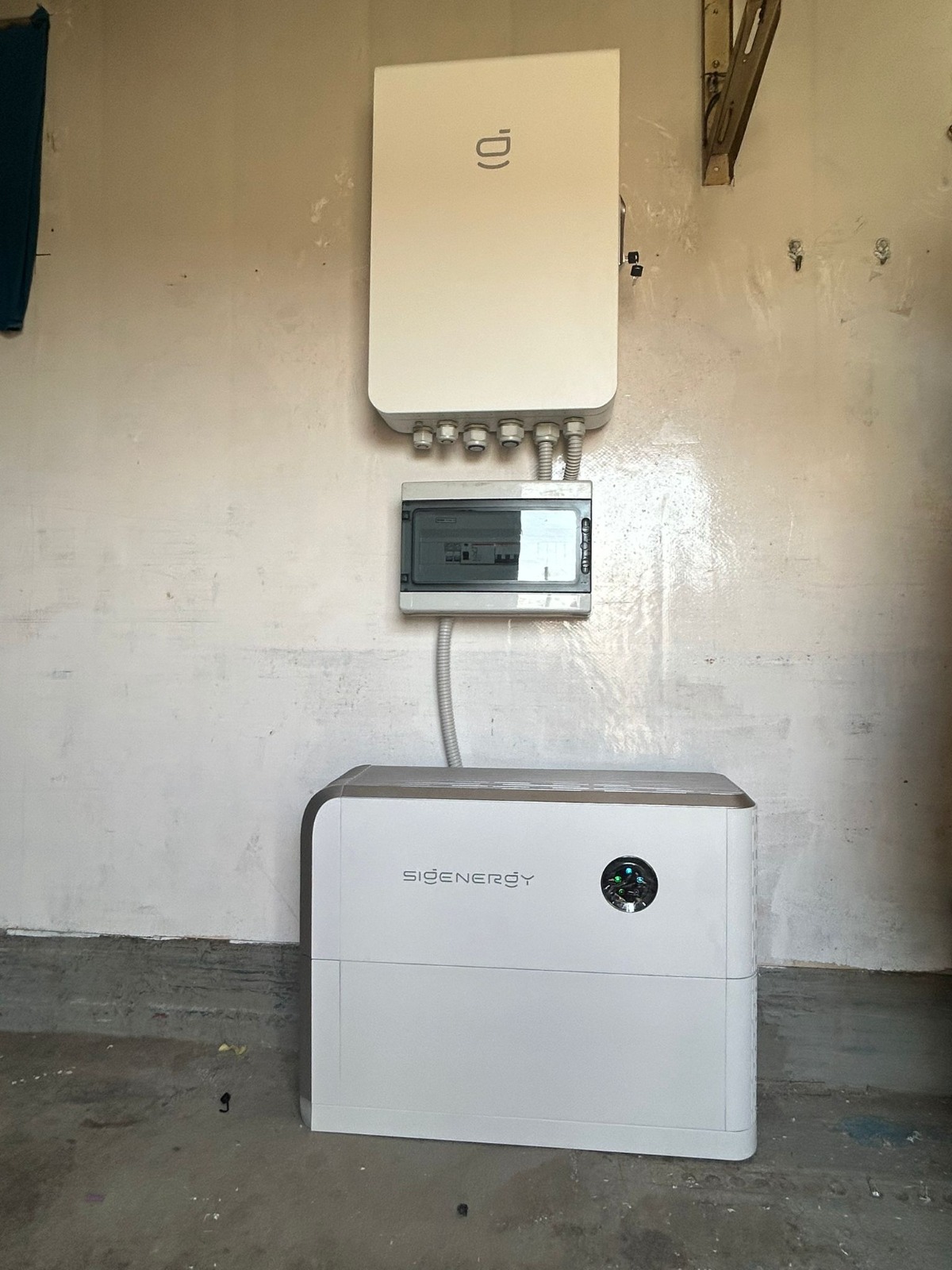One of the major debates within the energy sector focuses on the safety of storage systems based on lithium ferrophosphate (LiFePO4) batteries. Although these technologies are renowned for their chemical stability and extremely low risk of fire, the small percentage of cases in which thermal failure occurs poses a major challenge: extinguishing a fire in this type of battery is a complex task due to the autonomous exothermic reactions that are generated.
Sigenergy addresses this concern by integrating a 7-layer system of protection designed to mitigate risks from prevention to active incident response. These layers work in a coordinated manner to ensure that, even in critical situations, the battery operates in a safe and controlled manner. Below, we explore each of these layers of protection:
1. Distributed temperature sensors
Sigenergy batteries have 7 thermal sensors strategically located inside the module, monitoring the temperature of each cell in real time. These sensors allow the battery management system (BMS) to detect any thermal anomalies in their early stages.
- How it works: When a cell reaches a temperature outside the safe range, the BMS can reduce the charge/discharge current or disconnect the system completely, preventing the problem from escalating.
2. Aerogel pads
Aerogel, known for its low thermal conductivity, acts as a thermal barrier between the battery cells. These pads ensure that temperatures remain stable even under intensive charging conditions.
- Purpose: To dissipate heat generated by normal cell operation and prevent heat build-up in a specific area.
3. Inter-cell insulating pads
In addition to the dissipative properties of the aerogel, the cells are separated by additional insulating pads that prevent heat transfer between them.
- Key benefit: If one cell experiences a significant temperature rise, the pads prevent this heat from spreading to neighbouring cells, limiting the possibility of a knock-on effect.
4. Decompression valve
In situations of high temperature or internal pressure due to chemical reactions inside the cells, decompression valves are activated to release the accumulated gases in a controlled manner.
- Technical design: These valves are calibrated to open at a predefined pressure threshold, preventing a possible internal explosion of the module.
5. Automatic internal fire extinguisher
The final layer of safety is an extinguishing system integrated within the battery module. This device uses a chemical agent that is automatically released when critical temperatures are detected, smothering any flames before they can spread.
- Operation: The extinguisher operates by means of a chemical and physical mechanism that generates an inertising gas, eliminating the oxygen necessary for combustion and neutralising the fire.
This was the message from our customer, who initially had concerns about the security of the storage systems. After a detailed explanation and demonstration of the Sigenergy systems, his perspective changed completely. As a result, he decided to build a residential stand-alone installation consisting of a Sigenstor EC 3 SP, a Sigenstor Bat 5.0 and a Sigen Gateway HomeMax SP. This configuration allows not only to manage self-consumption, but also to perform backup functions or work in isolated installations of up to 24 kW of power, guaranteeing efficiency and safety.
